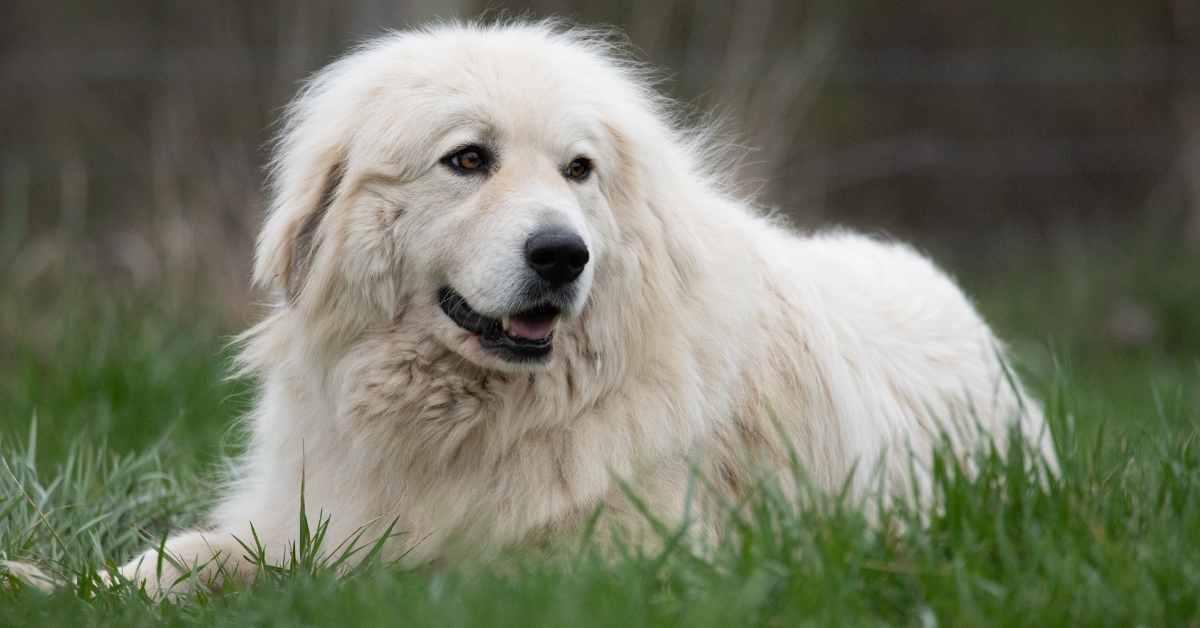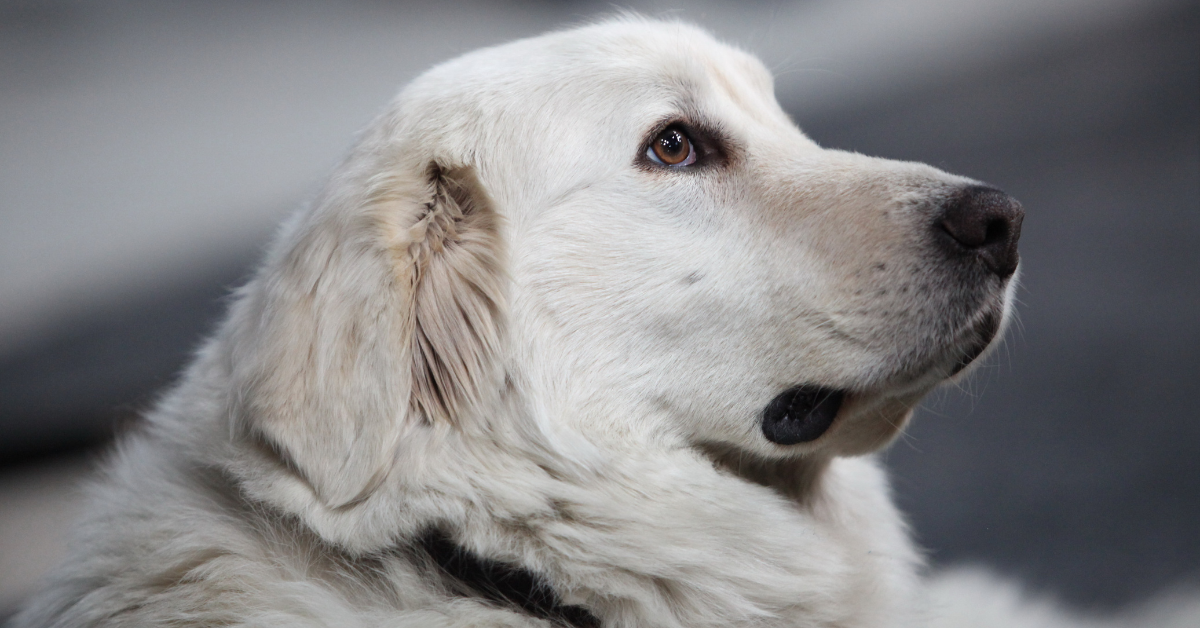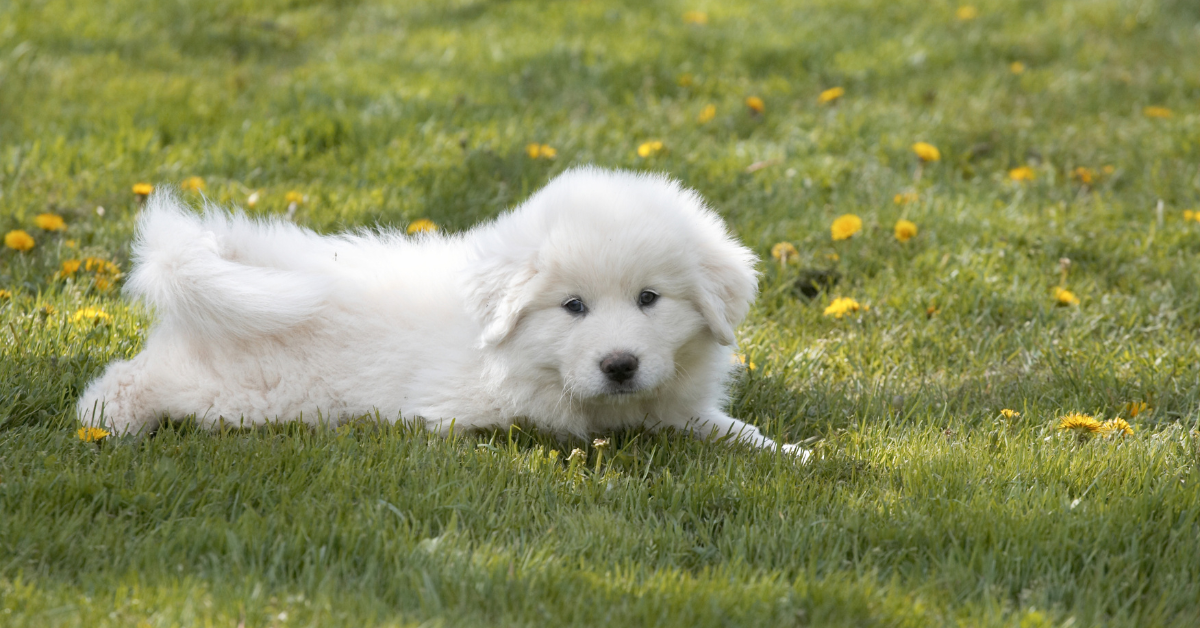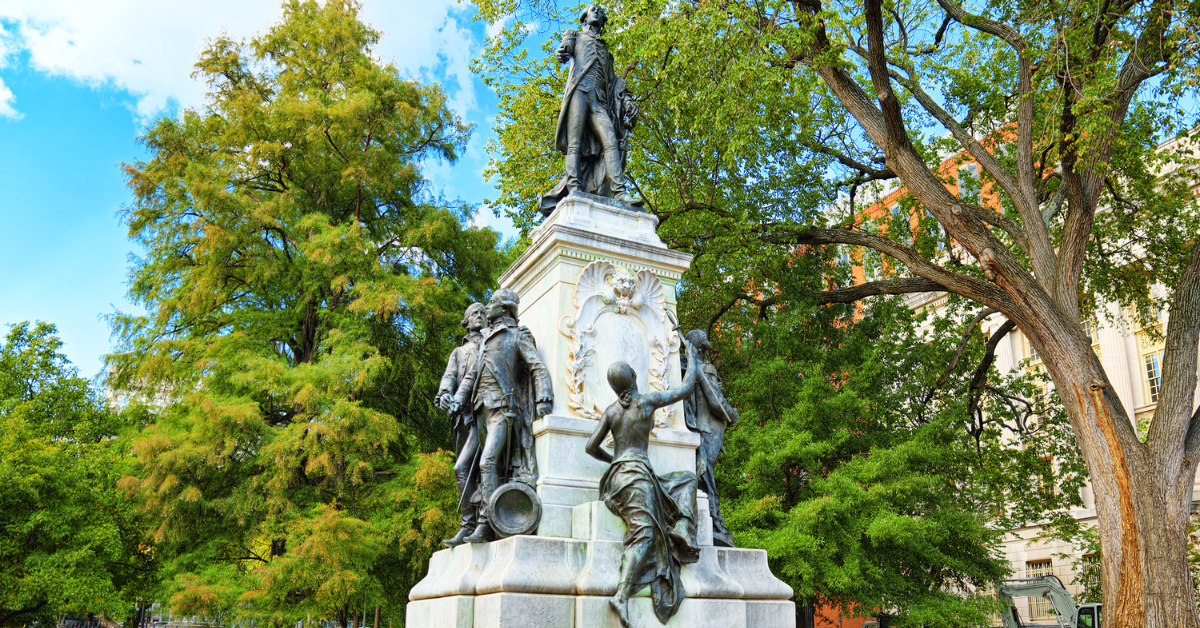Black Pyrenean Mountain Dog, also known as The Great Black Pyrenees dog, is enormous and powerful. We historically used these dogs as flock watchdogs to watch over sheep from threats such as robbery & wolves. Although the breed is still employed in this function today, many Great Pyrenees serve as cherished family pets.
The great Pyrenees are incredibly devoted to and protective of their family, including people and other animals who are part of the “pack.”
Most likely, they are descended from guard dogs that lived in Asia Minor at approximately 10,000 b.c. Nomadic shepherds who traveled to the Pyrenees mountains around 3,000 BC took their guard dogs with them. The Great Pyrenees breed most likely got its start in this manner.
These dogs can be friendly and playful with people. Because of their gentle and peaceful attitude, they make wonderful family dogs. Due to their size, giving these dogs lots of room to run around and play is crucial. Now, let’s delve into finding more about this dog breed in detail.
Breed Overview
General Facts
| Common Name | Great Pyrenees |
| Lifespan | 10-12 years |
| Color | 1. White 2. Gray 3. Tan |
| Skin type | Hair |
| Temperament | Patient, Intelligent & Calm |
| Diet | Omnivore |
| Size | Male: 27 to 32 inches, Female: 25 to 29 inches |
The Great Pyrenees as a Pet
| General Health | ⭐⭐⭐⭐ |
| Energy Level | ⭐⭐⭐⭐ |
| Shedability | ⭐⭐⭐⭐ |
| Trainability | ⭐⭐⭐⭐ |
| Intelligence | ⭐⭐⭐⭐ |
| Tendency to Chew | ⭐⭐ |
| Size | ⭐⭐⭐⭐⭐ |
| Family and kid-friendliness | ⭐⭐⭐⭐⭐ |
| Preferred Temperature | Cold climate |
| Yappiness / Barking | High |
| Female weight | 85-lbs |
| Male weight | 100-120+ lbs |
| Separation Anxiety | Moderate |
| Dog group | Herding |
| Exercise Needs | High |
| Pure bred cost to own | $600 to $5,000 |
| Friendly With Other Dogs | High |
Awesome Facts About the Great Black Pyrenees Dog
These gigantic dogs are not just any other dog. The Great Black Pyrenees dog holds some astonishing facts about its personality. Curious to get to know about them? Let’s discover some interesting and important facts about the black Pyrenees dog.
1. Named After a Mountain, the Great Pyrenees

This breed is named after the Pyrenees, a central mountain range that separates France and Spain. The great Pyrenees have served as flock protectors in these mountains, assisting shepherds for millennia. Because of their history connected to mountains, the Great Pyrenees are a great hiking partner.
Hence, when exploring the wide outdoors, it helps to have a dog with a protective and vigilant nature. Put your dog on a leash if you intend to take him hiking because they are territorial and wanderers.
2. The Black Pyrenees Puppies Grow Quickly
The lifespan of these growing puppies into adults is 19 – 12 years.
Great Pyrenees puppies weigh barely 1 to 2 pounds when they are newborns, but by the time they are three months old, they can weigh 30 to 40 pounds. Male Great Pyrenees weigh around 100 pounds at maturity, while females are about 80 pounds.
If you’re considering getting a Great Pyrenees puppy, make sure your living space will accommodate the needs of this dog breed. The great Pyrenees will develop into giant dogs. Therefore, they will require a lot of room to romp around in. They thrive in ranches, farms, and houses with substantial fenced-in yards.
You should start crate training your puppy quickly. Crate training will support your efforts to toilet train your dog and assist your Great Pyrenees in finding a peaceful area to rest. You should train your Great Pyrenees to use their kennel because they can be destructive if let to roam free.
3. The Pyrenees is approximately a wolf’s size

The Great Pyrenees had to protect sheep from wild animals who sought to eat them. A frequent canine predator that is the same size as the European gray wolf (Eurasian wolf) and capable of encountering.
The breed descended from the white dogs from Asia Minor that traveled with Phoenician traders and Aryans from Central Asia. The Great Pyrenees is a lupomossoloid, which means they descended from wolves without the influence of mastiffs or mossoloid dogs, according to the Great Pyrenees Club of America.
4. There Are Several Names For The Great Pyrenees
In the U.S., they refer to the breed as the Great Pyrenees. The Pyrenees Dog is also known as the Pyrenean Mountain Dog in the U.K. and other parts of Europe. In France, the breed is known as Le Chien de Montagne Des Pyrenees or Le Chien Des Pyrenees.
5. There is a National Club for the Great Pyrenees

The Great Pyrenees Club of America was acknowledged by the American Kennel Group as the breed’s parent club in 1935. Just one national parent club in the U.S. represents all breeds approved by the A.K.C.
A nonprofit organization called the Great Pyrenees Club of America works to raise awareness of the breed, control competitions and other events related to it, support breed rescue efforts, and protect the breed standard, which is a thorough description of the ideal Great Pyrenees.
6. The Black Pyrenees Can Be Devoted Family Members
Natural protectors and protectors of children and animals, Great Pyrenees keep them safe from harm. These are wonderful family pets because of their gentle spirit and peaceful nature. A family with young children would benefit greatly from owning a Great Pyrenees dog.
These dogs are loving, tolerant, and playful. The Great Pyrenees can be a terrific playmate and companion for a youngster, significantly if they are raised with kids.
When kids are around a Great Pyrenees, just as with other dog breeds, it’s always crucial to keep an eye on them, the risk of injury will be reduced. Because the Great Pyrenees is such a giant dog, toddlers and babies should be properly watched.
In some cases, a Great Pyrenees will guard a child. They may exhibit solid protective behavior. To avoid them behaving aggressively toward strangers, you’ll want to ensure your dog is adequately socialized and trained.
7. The Pyrenees Don’t Need a Lot of Exercise

Despite being enormous, the Great Pyrenees do not necessitate hours of exercise daily. The working Great Pyrenees spend much of their day laying or sitting next to the flock, constantly looking for impending danger. Aim for a reasonable amount of daily activity, such as leashed walks and off-leash playtime in a secure yard.
Although the Great Pyrenees is not an incredibly energetic dog, they still require some moderate exercise. They were developed as mountain dogs to guard livestock. When there is no immediate threat, they will still patrol the area they are protecting but will not exert much effort.
For this breed, daily walks and sometimes running around in a fenced-in backyard can suffice. In obedience competitions or cart-pulling events, Great Pyrenees also perform well.
8. The Great Pyrenees are Naturally Protective
The breed suspects strangers because of their territorial nature & has a powerful instinct to protect the family and the home. The Great Pyrenees must be socialized and trained from a young age to accept friendly visits. So it is essential to teach these furry pets.
Training Great Pyrenees can be a little tricky. They don’t usually comply with orders immediately because they were raised to be highly autonomous. The great Pyrenees will thrive with knowledgeable dog owners with experience in training dogs. You might also consider enrolling your dog in a class for obedience training.
For the Great Pyrenees, positive reinforcement training techniques are most effective. The Great Pyrenees can become uncontrollable if they are not given proper training.
Untrained dogs that weigh more than 100 pounds might cause serious issues.
Although the Great Pyrenees are known for their independence and tenacity, they are trainable.
9. The Great Pyrenees & Nocturnal Habits

Many Pyrenees owners say their dogs like “patrolling” their homes and families at night. To warn you of anything strange, the Great Pyrenees are also noted for barking a lot (particularly at night). Many Pyrenees owners keep their dogs indoors at night to prevent annoying neighbors.
10. They Became French Royalty
The Great Pyrenees was the cattle farmer’s dog for thousands of years. But during the Renaissance, he became more well-liked among the French nobility and royals. The Chateau fort de Lordes, a castle in southwest France, reportedly had “Great Dogs of the Mountains” guardians, according to documents in French from 1407. King Louis XIV named the Great Pyrenees the Royal Dog of France in 1675.
11. They’ve Been fossilized Because the Breed is so Old
Around 3,000 B.C., the Great Pyrenees and their shepherds most likely made their way to the Pyrenean Mountains. There have been Great Pyrenees fossils discovered that date to between 1800 and 1000 B.CB.C. According to experts, the breed most likely descended from white mountain dogs first found in Asia Minor 11,000 years ago.
12. The Marquis de Lafayette Brought Them to America

A French military officer named Marquis de Lafayette was the first person who brought Th Great Pyrenees to America in 1824. The officer was very close to George Washington and fought the American Revolutionary war.
13. One Belonged to Queen Victoria
Pyrs were sought after by more than just the French elite. In the 1800s, Queen Victoria of England held one. Throughout her life, Queen Victoria had a variety of canine breeds because she loved dogs.
14. They were Employed in WWII to Transport Artillery
The Great Pyrenees were used to transport artillery supplies between Spain and France across the Pyrenees Mountains during World War II.
15. They Aided in the St. Bernard’s Recovery
After avalanches and distemper at the hospice in Switzerland severely reduced the population of this noble dog, Pyrenean blood was combined with that of other considerable breeds in 1870 to help bring St. Bernard back.
Pros & Cons
Pros
- A great pet for families:– A great family dog is the Great Pyrenees. With those they care about, they are friendly and loving. With youngsters, they can also be quite kind and patient.
- Devoted:– The Great Pyrenees have a strong loyalty and devotion to their family.
- Only needs moderate exercise:– Most people can quickly meet the Great Pyrenees’ exercise needs. They won’t need much more than daily walks and occasional playtime in a fenced-in yard.
Cons
- Damaging:– Puppy chewing is destructive; puppies will eat anything they can. If this breed is left unsupervised at home or outside their box, they may also act destructively.
- Barks a lot:– Great Pyrenees can be fiercely protective of their territory and will bark loudly at visitors.
- Heavy shedders:-Most people can quickly meet the Great Pyrenees’ exercise needs. They won’t need much more than daily walks and occasional playtime in a fenced-in yard.
Takeaway
The Great Black Pyrenees dogs are rare but are evident in their existence. They are an ancient breed and a friendly pet to live with even around children. A loyal & devoted furry companion.
Elena Gherman is a highly skilled and knowledgeable animal care expert. At the start of her career, she gained practical expertise with multiple animals. In addition to that, she works as a DVM veterinary editor for Joy Pet Products, which focuses on offering reliable information on pet health and wellbeing. She meticulously reviews each piece of writing before it is published to make sure pet owners get the most precise and updated information possible.
